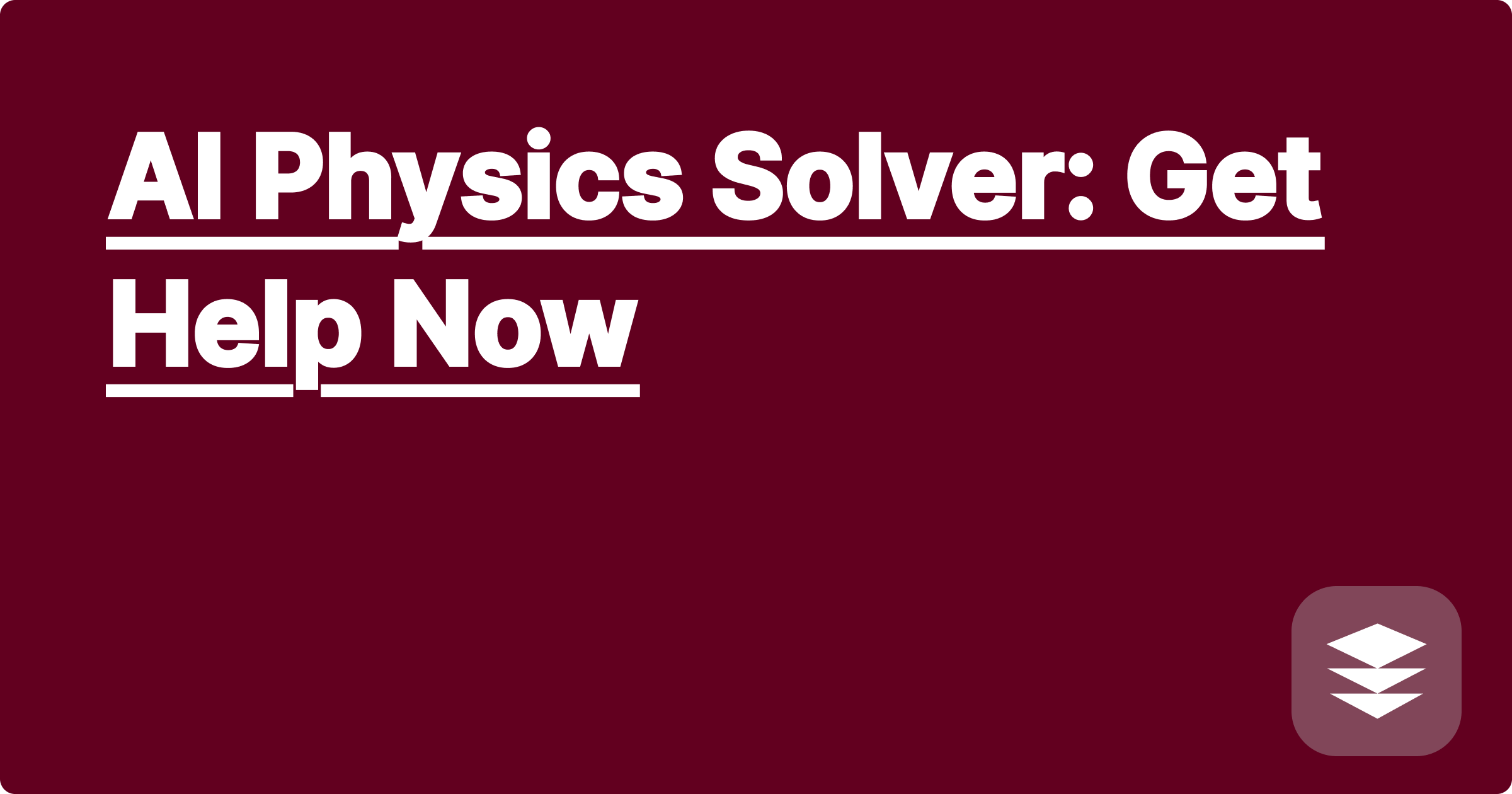
STEM fields often present complex challenges, particularly in physics, where understanding intricate concepts and solving intricate problems can be daunting. The sheer volume of information, coupled with the abstract nature of some concepts, creates a significant hurdle for many students and researchers. Fortunately, the rise of artificial intelligence offers powerful new tools to help overcome these obstacles. AI-powered physics solvers can provide invaluable support, assisting with everything from understanding fundamental concepts to tackling complex calculations and derivations.
For STEM students and researchers, leveraging these AI tools can be transformative. They can provide personalized learning experiences, offering tailored explanations and step-by-step solutions to specific problems. This can significantly enhance understanding and accelerate the learning process. Furthermore, AI can free up valuable time and mental energy, allowing researchers to focus on higher-level thinking, experimentation, and innovation. Embracing these tools is not just about making things easier; it's about empowering individuals to push the boundaries of scientific discovery.
Physics, at its core, involves understanding the fundamental laws governing the universe, from the motion of subatomic particles to the behavior of galaxies. This requires grappling with abstract concepts like quantum mechanics, relativity, and electromagnetism. Students often struggle with visualizing these concepts and applying them to real-world problems. Furthermore, physics problems often involve complex mathematical formulations, requiring proficiency in calculus, differential equations, and linear algebra. Even with a strong mathematical background, the process of translating a physical scenario into a mathematical model and then solving the resulting equations can be incredibly challenging. This difficulty can lead to frustration and discourage students from pursuing physics further. For researchers, these challenges can impede progress, slowing down the pace of scientific discovery.
AI tools like ChatGPT, Claude, and Wolfram Alpha offer a novel approach to tackling these challenges. ChatGPT and Claude excel at providing natural language explanations of complex concepts. They can break down intricate theories into digestible chunks, offering personalized tutoring and answering specific questions. Wolfram Alpha, on the other hand, is a computational powerhouse capable of performing symbolic calculations, solving equations, and generating visualizations. By combining the strengths of these tools, students and researchers can create a powerful learning and problem-solving environment. They can use ChatGPT or Claude to understand the underlying physics and then leverage Wolfram Alpha to perform the necessary calculations.
Let's consider a scenario where a student is struggling to understand and solve a problem involving projectile motion. First, the student can pose a question to ChatGPT or Claude, such as "Explain the concept of projectile motion and its key equations." The AI will then provide a detailed explanation, including the relevant equations like the equations for horizontal and vertical displacement. Next, the student can input the specific parameters of the problem, such as the initial velocity and launch angle, into Wolfram Alpha. Wolfram Alpha will then calculate the trajectory, maximum height, and range of the projectile. Furthermore, it can generate visualizations of the projectile's path, providing a clear and intuitive understanding of the problem.
Consider a specific example: A ball is thrown at an angle of 30 degrees with an initial velocity of 20 m/s. We want to find the maximum height the ball reaches. Using ChatGPT or Claude, we can confirm that the relevant equation is h = (v₀² * sin²θ) / (2g), where h is the maximum height, v₀ is the initial velocity, θ is the launch angle, and g is the acceleration due to gravity (approximately 9.8 m/s²). We can then input this equation and the given values into Wolfram Alpha. Wolfram Alpha will then calculate the maximum height, which is approximately 5.1 meters. This demonstrates how AI can be used to solve specific physics problems step-by-step.
Another example involves understanding complex concepts like the Doppler effect. ChatGPT or Claude can provide a comprehensive explanation of the Doppler effect, including its applications in astronomy and medicine. They can also explain the relevant equations and provide examples of how to apply them. This allows students to gain a deeper understanding of the concept beyond simply memorizing formulas.
To maximize the benefits of AI in STEM education and research, it's crucial to develop effective strategies. Don't simply rely on AI to provide answers; use it as a tool to enhance understanding. Start by clearly defining the problem or concept you're trying to understand. Then, use AI tools to break down complex information into smaller, more manageable chunks. Experiment with different prompts and questions to explore various perspectives. Always verify the information provided by AI with trusted sources, such as textbooks and peer-reviewed articles. Finally, actively engage with the material, working through examples and practicing problem-solving.
In conclusion, AI-powered physics solvers offer a powerful new approach to learning and research. By combining the strengths of tools like ChatGPT, Claude, and Wolfram Alpha, students and researchers can overcome complex challenges and accelerate their progress. Embracing these tools requires a shift in mindset, moving from passive consumption of information to active exploration and problem-solving. By adopting the strategies outlined above, you can harness the full potential of AI and unlock new possibilities in your STEM journey. Start exploring these tools today and discover how they can transform your understanding of physics and propel your academic success.
Conquer STEM: AI Practice Tests
AI Math Solver: Instant Solutions
AI Lab Assistant: Automate Tasks
Smart STEM Learning: AI-Powered
AI Science Solver: Easy Answers
Pass STEM Exams: AI-Powered Guide